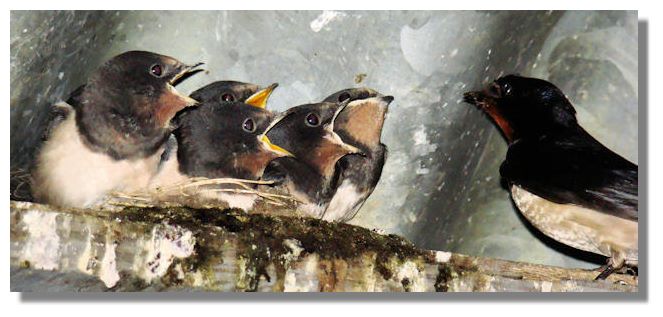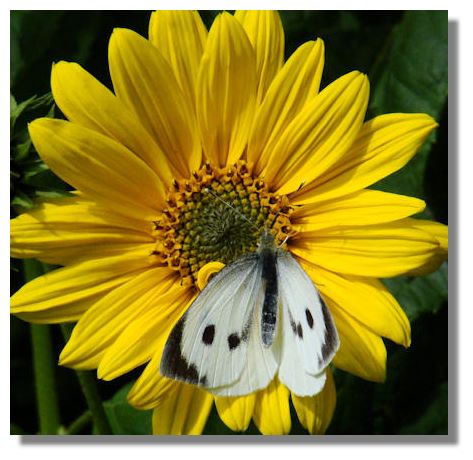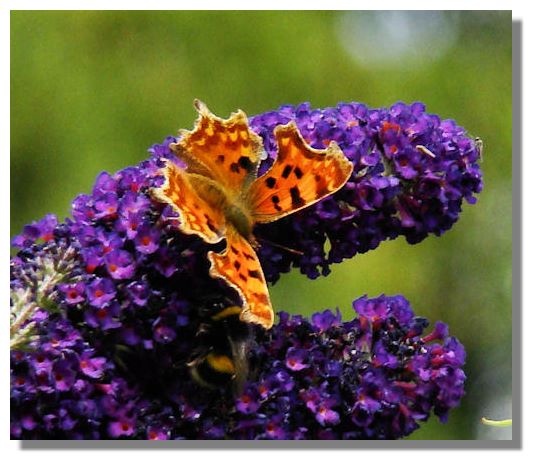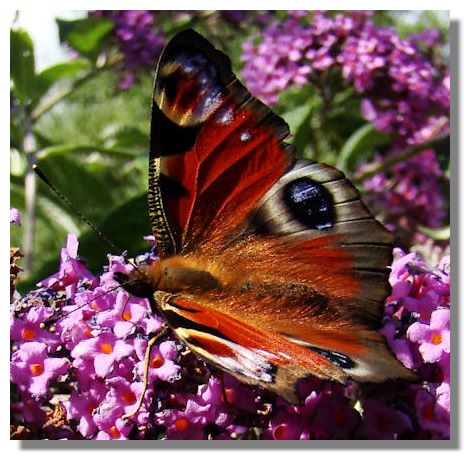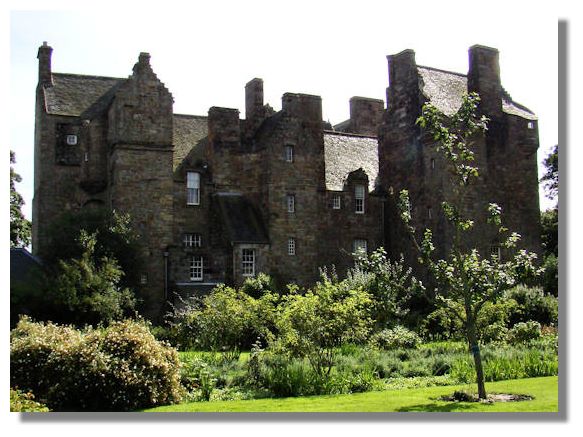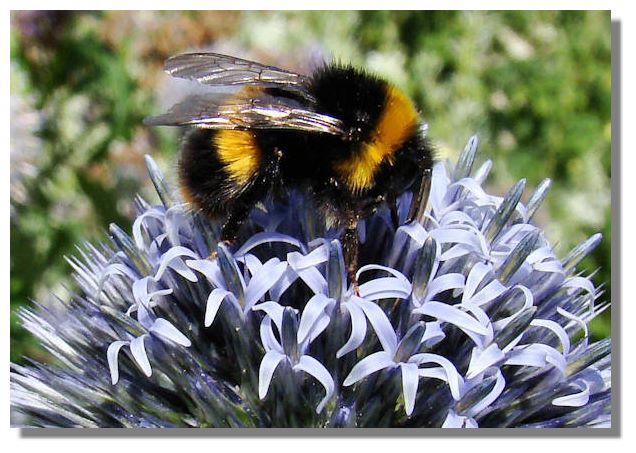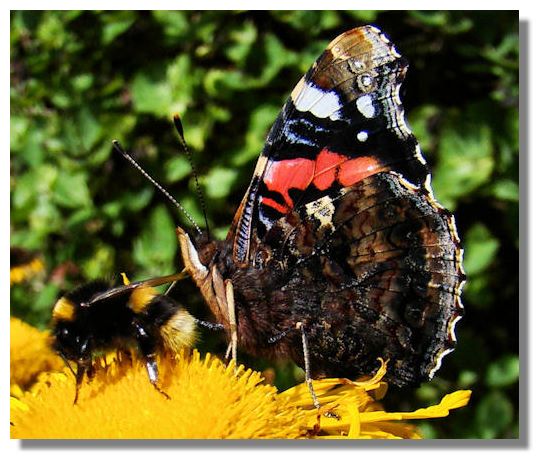The Rampant Scotland Newsletter includes a number of photographs which illustrate the weather and the seasons, plus the flora and fauna of the current week around Scotland. This separate "colour supplement" displays some more pictures, in a larger format. Here is this week's crop of Scottish views!
If you count the number of swallow chick beaks pointing towards the parent, you will see that there are five hungry mouths to feed. This is probably the second brood that this swallow and its mate will be rearing this summer. They will have to work hard to fatten up their chicks in a comparatively short time - before they all depart on the 6,000 mile journey to over-winter in southern Africa.
In a year when garden butterflies have been almost non-existent, it's the small white varieties that seem to have survived best - partly because they continue to fly in dull, cool weather. This picture, however, is of a "Large White" feeding on the flower of Heliopsis.
The Comma butterfly declined dramatically in Britain in the 19th century and by 1920 there were only two sightings in the UK. It has since staged a dramatic come-back, mainly in the south of England. But a few have been seen in Scotland in recent years, mainly in the Scottish Borders and around in the countryside round Edinburgh. But the numbers reported to the Butterfly Conservation Scotland each year of this orange and brown species, with its ragged wing edges, have struggled to reach double figures. So it was exciting to see one in the grounds of Scone Palace in Perthshire last week. What made it particularly pleasing was that I photographed a Comma here in April 2007, so it looks as though some are surviving in this area.
The poor, wet weather this summer has meant that even the butterflies seen in appreciable numbers in normal years have been hard to find. But those that survived last winter must have been successful in laying eggs (usually 500 at a time) in the spring - otherwise this fine Peacock, with its large red wings, black markings and distinctive eyespots on the tips of fore and hind wings, would not have hatched out to appear in the summer. Once again, this fine specimen was one of many photographed in the grounds of Scone Palace.
The first record of Kellie Castle in Fife dates as far back as 1150 when Malmure, thane of Kellie, witnessed a charter from King David I. By 1266 Kellie had passed to the Siward family (who had earlier come from Northumbria and assisted King Malcolm "Canmore" to overthrow Macbeth). Richard Siward's daughter signed over the estate to a relative, Walter Oliphant and that family lived in Kellie for 250 years. During that time, additional apartments were added to the original tower house. The castle is now owned by the National Trust for Scotland. Unlike many a grand castle it looks like a family home - with toys and a rocking horse in the nursery. There is a walled garden and the Trust has replanted this to be a charming Scottish Kitchen garden.
Here is a busy bee seeking out nectar from the globular flower cluster of a tall Echinops - the globe thistle. The flowerheads are around 1½ inches across, so there are plenty of individual flowers to be probed by the bee.
The underside of the wings of some butterflies can often be drab and uninteresting - looking more like a dried leaf, as it tries to disguise itself from predators. But the beautiful Red Admiral manages to combine camouflage with a striking, colourful design. Surprisingly, the butterfly and the bee are co-existing on the same Inula flower - often the butterfly will flick its wings to chase away any other insect.If you want to look back at earlier editions of this Colour Supplement, there is an Index Page
